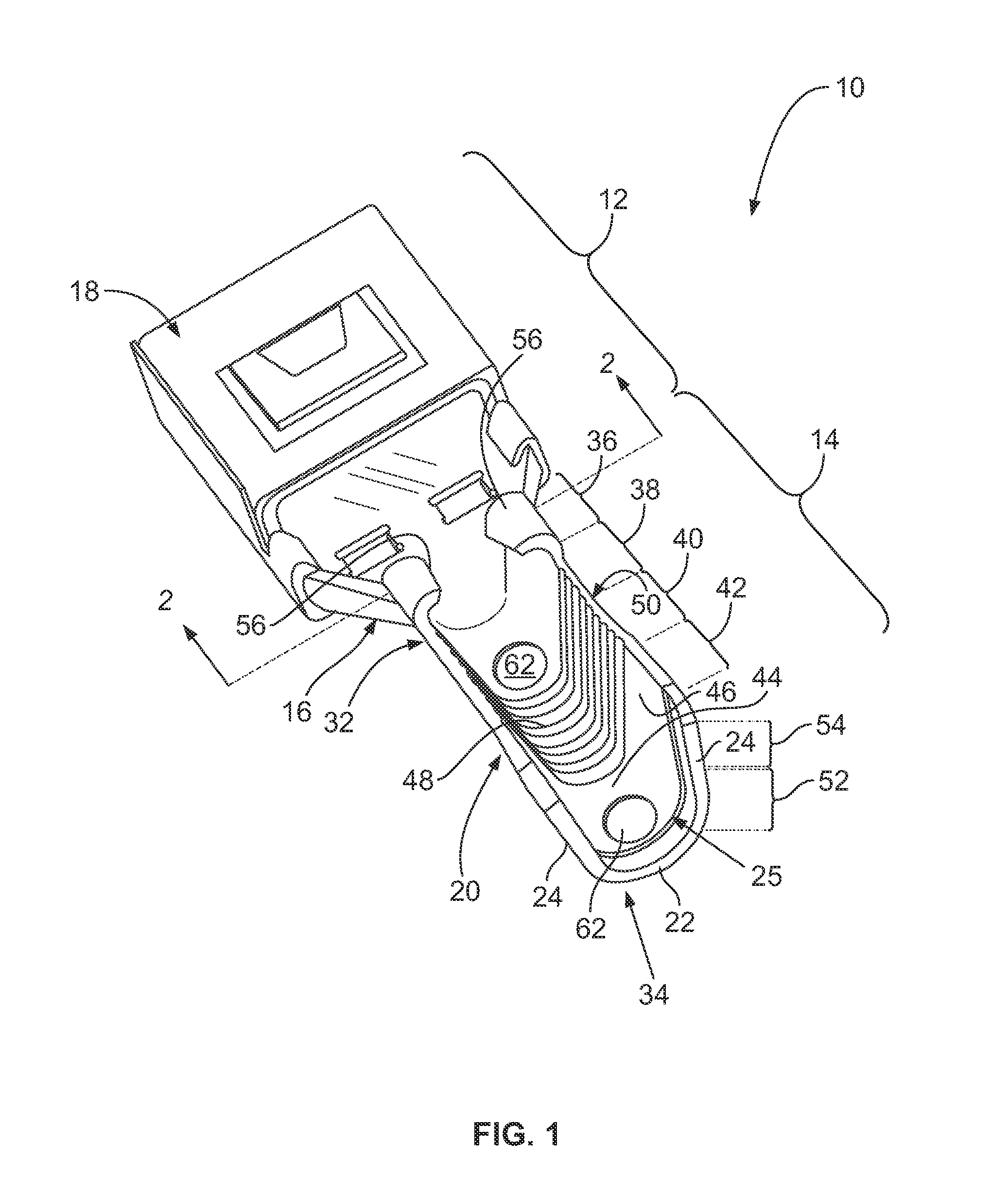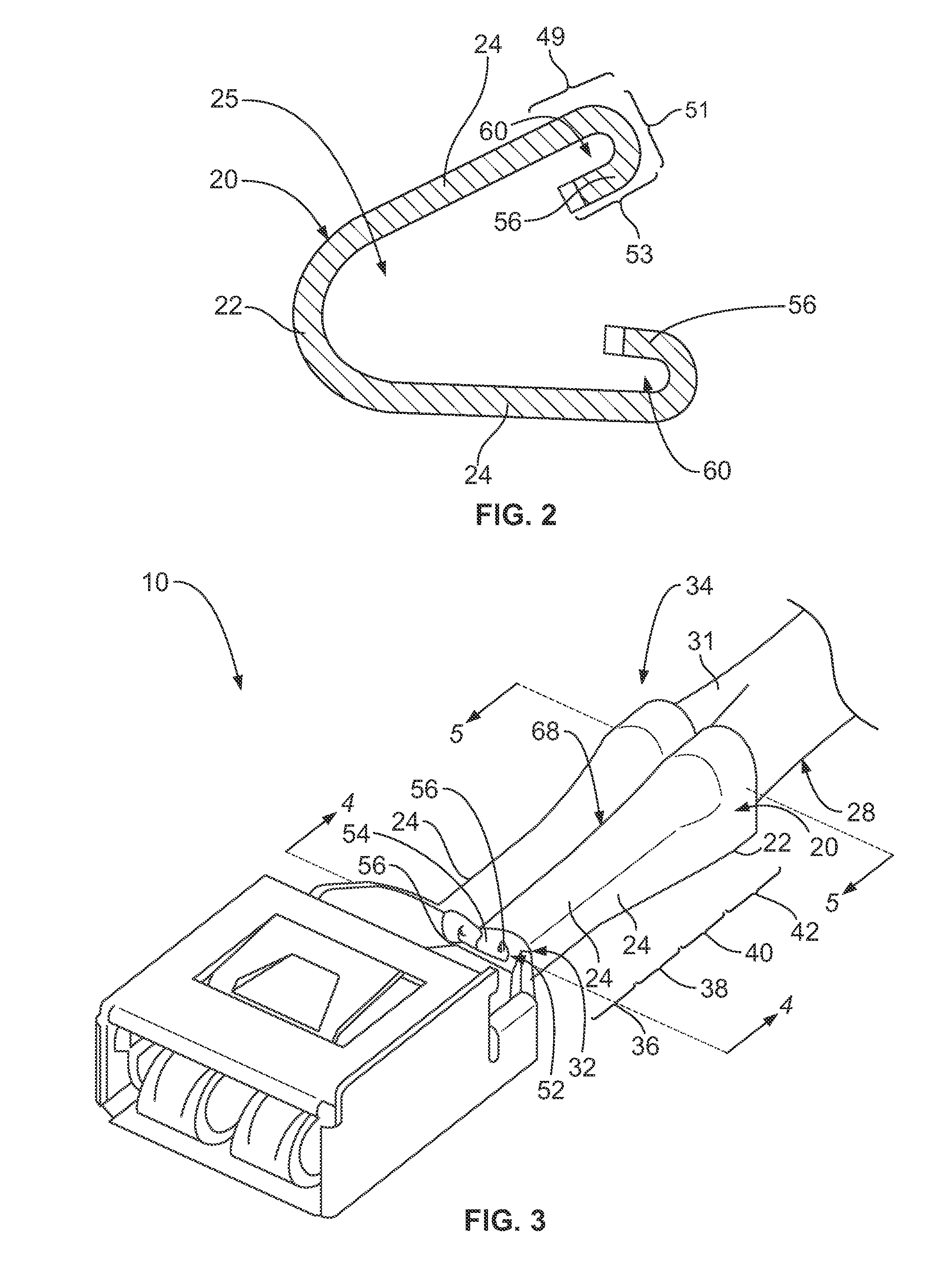Electrical terminal for terminating a wire
a technology of electric terminals and terminals, which is applied in the direction of coupling bases/cases, coupling devices, and connections effected by permanent deformation, etc., can solve the problems of aluminum as a conductor material being an oxide layer that may build on the exterior surface of the conductor, and the electrical conductivity of the oxide layer is relatively poor
- Summary
- Abstract
- Description
- Claims
- Application Information
AI Technical Summary
Problems solved by technology
Method used
Image
Examples
Embodiment Construction
[0022]FIG. 1 is a perspective view of an exemplary embodiment of an electrical terminal 10. The terminal 10 includes an electrical contact segment 12 and a crimp segment 14 that extends from an end 16 of the electrical contact segment 12. The electrical contact segment 12 includes an electrical contact 18. In the exemplary embodiment, the electrical contact 18 is a receptacle that is configured to receive a mating contact (not shown) therein. But, the electrical contact 18 shown herein is meant as exemplary only. The electrical terminal 10 is not limited to the electrical contact 18 shown herein, but rather the electrical terminal 10 may include any type of electrical contact 18, such as, but not limited to, a crimp barrel, a spring contact, a beam contact, a tab, a structure having an opening for receiving a threaded or other type of mechanical fastener, and / or the like.
[0023]The crimp segment 14 includes a crimp barrel 20. The crimp barrel 20 includes a base 22 and opposing side w...
PUM
 Login to View More
Login to View More Abstract
Description
Claims
Application Information
 Login to View More
Login to View More - R&D
- Intellectual Property
- Life Sciences
- Materials
- Tech Scout
- Unparalleled Data Quality
- Higher Quality Content
- 60% Fewer Hallucinations
Browse by: Latest US Patents, China's latest patents, Technical Efficacy Thesaurus, Application Domain, Technology Topic, Popular Technical Reports.
© 2025 PatSnap. All rights reserved.Legal|Privacy policy|Modern Slavery Act Transparency Statement|Sitemap|About US| Contact US: help@patsnap.com



